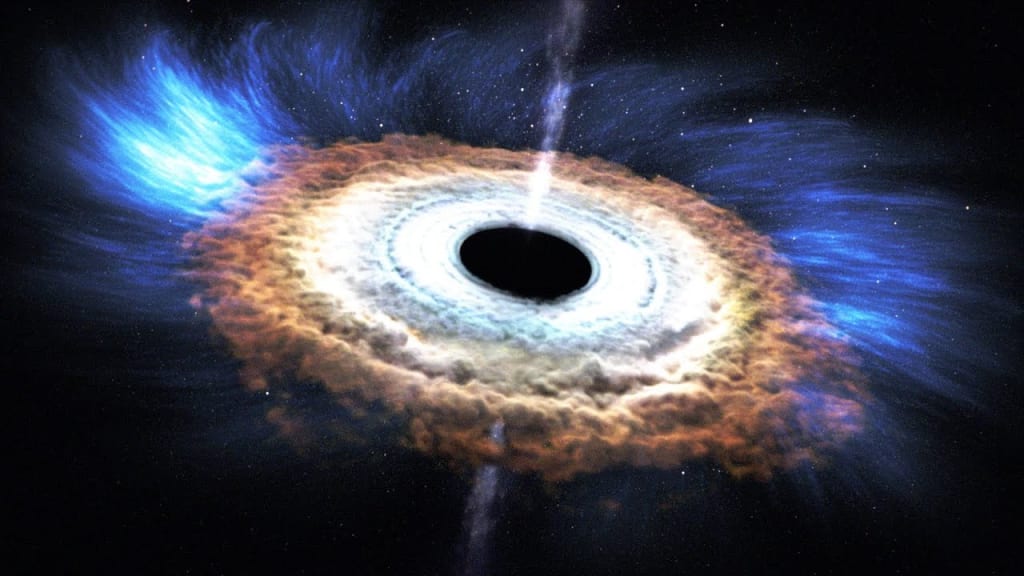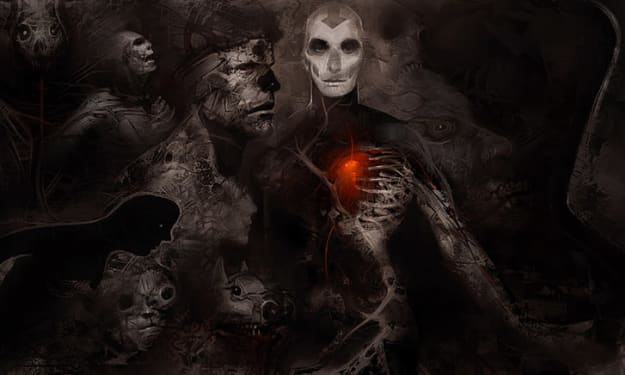Dark old star
secrets of black hole

Over the years, a fascinating and complicated story about black holes' origins has come to light. When scientists started investigating the characteristics of gravity and the behaviour of light in the late 18th and early 19th centuries, the idea of black holes initially came into being.
The English astronomer John Michell, who suggested the concept of "dark stars" in 1783—objects so enormous and dense that not even light could escape their gravitational pull—was one of the first pioneers in the study of black holes. Yet, the idea of black holes wasn't properly developed and comprehended until the 20th century.
Karl Schwarzschild, a German physicist, created a mathematical formula to Astronomers started to notice how black holes affected their environment in the decades that followed, including how they bent light and changed how stars orbited. More proof of the existence of black holes came from the discovery of quasars, which are incredibly bright, far-off objects fuelled by the accretion of matter onto a supermassive black hole.
Black holes are among of the most extreme and mysterious things in the universe, according to current understanding. They are created when a large star exhausts its fuel and collapses in on itself, producing an event horizon and a singularity, which is a point of infinite density and zero volume. There are several sizes of black holes, from tiny "stellar" black holes to supermassive ones.resolve Einstein's equations in the early 20th centuThough the idea of a black hole has been the subject of scientific study for millennia, it wasn't until the 20th century that the scientific world came to completely grasp and accept the idea. A lot of the most creative minds in physics have contributed to the fascinating and complicated history of black holes, which spans decades.
The French mathematician and astronomer Pierre-Simon Laplace initially introduced the concept of "dark stars" in the late 18th century, which is when the first reference to a black hole was first made in writing. Laplace proposed that a star's gravity would be powerful enough to prevent light from escaping, effectively making it invisible, if it were huge enough. His contemporaries, however, overwhelmingly rejected this concept.
Despite these early discoveries, black holes weren't the focus of significant study until the 1960s. The term "black hole" and its introduction to the forefront of scientific thought are credited to American physicist John Wheeler. Wheeler's research contributed to the idea of a black hole being recognised as a genuine physical entity rather than merely a mathematical curiosity.
Since then, research into black holes has flourished, yielding numerous important findings and ground-breaking innovations. Using a global network of telescopes, researchers managed to take the first-ever photo of a black hole in 2019. This ground-breaking accomplishment expanded study possibilities and deepened our grasp of these intriguing and enigmatic thing.Astronomers and physicists have been interested in the study of black holes for a long time. Black holes were first predicted to exist in the early 20th century, but it wasn't until the 1960s and 1970s that researchers really started to look into these enigmatic objects.
The German physicist Karl Schwarzschild made the initial suggestion that black holes exist. Albert Einstein's general relativity equations were mathematically solved by Schwarzschild in 1915, and the result represented a singularity—a point of infinite density—surrounded by an event horizon, beyond which nothing—not even light—could exist. The consequences of black holes on the universe, however, weren't visible to astronomers until much,Astronomers started to notice intense X-ray sources that were unaccounted for by any known object as X-ray astronomy developed into a potent instrument for examining the cosmos. In particular, accreting black holes that were grabbing matter from a nearby partner star and heating it to incredibly high temperatures, causing it to radiate X-rays, were the cause of these sources, which were eventually recognised as the origin of these sources.
When physicist Stephen Hawking and astronomer John Wheeler hypothesised that black holes were not entirely black after all, it became one of the most well-known black hole findings. Their hypothesis states that black holes release a particular kind of radiation called Hawking radiation, which is brought on by quantum phenomena close to the event horizon. Although this radiation is quite weak and
About the Creator
PRABHA STORY WRITES
I overrate stories over films...poetry over modern songs...and nature over parties. Seek here to know about breathe taking contents,"no blinking stories" and nothing less than the word "amazing".






Comments
There are no comments for this story
Be the first to respond and start the conversation.